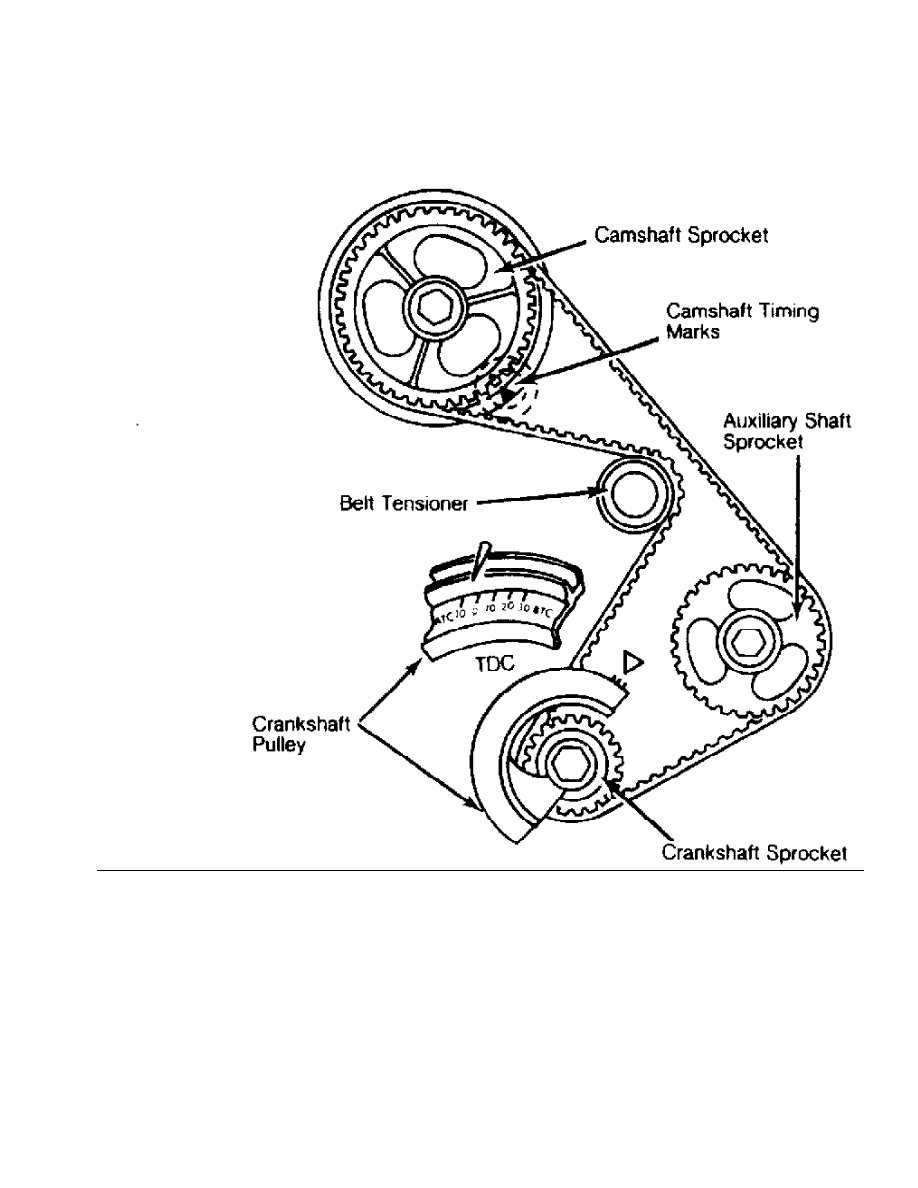Mitsubishi Montero (1991+). Manual - part 117

Fig. 25: Timing Belt Sprocket Alignment - Typical
This Graphic For General Information Only
TENSION ADJUSTMENTS
If guide rails are used with spring loaded tensioners,
ensure at least half of original rail thickness remains. Spring
loaded tensioner should be inspected for damage.
Ensure all timing marks are aligned. Adjust belt tension
using manufacturer’s recommendations. Belt tension may require
checking using tension gauge. See Fig. 26.